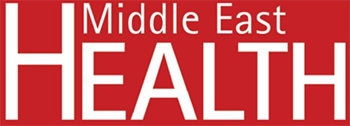The world’s first robotic cardiac telesurgeries have been successfully performed using the Indian-made SSI Mantra surgical robotic system, connecting surgeons in Gurugram to patients in Jaipur across a distance of 286 kilometres, with exceptional precision and minimal latency.

SS Innovations, the developer of India’s first indigenous surgical robotic technology, has achieved a significant milestone in global telemedicine by successfully completing two world-first robotic cardiac telesurgeries. Performed using the SSI Mantra 3 Surgical Robotic System, these procedures connected SS Innovations’ headquarters in Gurugram with Manipal Hospital in Jaipur, spanning 286 kilometres, and demonstrated exceptional precision with latency of less than 40 milliseconds.
Breakthrough telesurgical procedures
The first procedure performed was a telerobotic-assisted Internal Mammary Artery harvesting, which was completed in 58 minutes with a total latency of just 35-40 milliseconds (approximately 1/20th of a second). This was led by Dr Sudhir Srivastava, Founder, Chairman, and CEO of SS Innovations International, operating from the company’s headquarters in Gurugram, supported by Dr Lalit Malik and his team at Manipal Hospital in Jaipur.
Following this initial success, the team performed a second world-first procedure: a Robotic Beating Heart Totally Endoscopic Coronary Artery Bypass (TECAB), widely recognised as one of the most complex cardiac surgical procedures. This operation was also conducted via telesurgery with a similarly impressive latency of only 40 milliseconds.
The significance of these procedures extends beyond their technical achievement. They represent a paradigm shift in surgical capabilities, demonstrating how complex cardiac operations can be performed remotely with precision equivalent to in-person surgery. The minimal latency is particularly noteworthy, as even slight delays in response time could compromise surgical outcomes in such delicate procedures.


Regulatory approval and system capabilities
The SSI Mantra 3 Surgical Robotic System has achieved another important distinction as the only robotic system globally to have received regulatory approval specifically for telesurgery and tele-proctoring. This approval from India’s Central Drugs Standard Control Organization (CDSCO) validates the system’s capabilities for remote surgery and distance medical education.
Dr Sudhir Srivastava, who has been a pioneer in robotic cardiac surgery for decades, emphasised the humanitarian implications of this technology: “We are extremely thrilled to have advanced the capabilities of surgery to benefit humanity, especially in areas that need it the most. By enabling telesurgery, we can bridge gaps in access to medical expertise and deliver the highest standard of care, regardless of geographical barriers.”
Dr Srivastava further noted the particular relevance of this technology for India: “For a country like India, with its vast rural population and significant healthcare disparities, this innovation is transformative. Telesurgery brings world-class surgical expertise directly to underserved communities, eliminating the need for patients to travel long distances to urban centres for specialized care. It ensures timely interventions while reducing logistical and financial burdens on families.”

Implications for global healthcare accessibility
The successful demonstration of telesurgery at such distances has profound implications for healthcare accessibility worldwide. In regions with limited access to specialised surgical expertise, particularly in cardiac surgery, this technology could potentially bridge critical gaps in care delivery.
Dr Lalit Malik, Chief of Cardiac Surgery at Manipal Hospital, Jaipur, commented on the achievement: “This groundbreaking inter-state robotic cardiac telesurgery marks a significant leap in enhancing patient care through innovation. The remote robotic-assisted CABG on an elderly patient from Jaipur exemplifies how technology is bridging geographical gaps to provide accurate and timely medical interventions. This achievement underscores our dedication to offering world-class healthcare and ensuring patients have access to the most advanced treatment options available.”
The historical context of this achievement was highlighted by Dr Fredric Moll, widely regarded as the “Father of Surgical Robotics” and Founder of Intuitive Surgical, who now serves as SS Innovations International’s Vice-Chairman. Dr Moll noted: “I would like to extend my heartfelt congratulations to Dr Srivastava and the entire SSI team on the successful achievement of performing the world’s first robotic cardiac telesurgeries. It is delightful to see just how far we have come since the inception of surgical robotics more than 20 years ago.”
Dr Moll provided historical context for the achievement: “As many may recall, the original robotic system was designed to achieve two things, remote surgery and the ability to perform coronary bypass surgery in a complete closed chest approach. My approach was this, if you could perform beating heart bypass surgery with the robot, then all other procedures would be possible. Due to the bandwidth limitations at the time, the telesurgery goal was put on hold while we further broadened the applications of the robotic system across all specialties.”
He added: “I believe that SS Innovations has seized the opportunity, to not only develop the next generation of a surgical robotic system, but to also push the envelope of just what was dreamed more than 20 years ago, achieving a successful demonstration of telesurgery coupled along with a highly complex cardiac surgical procedure. With this achievement, I have no doubt that certainly more opportunities will present themselves as we have now entered into a new paradigm shift towards surgery and how we will soon approach it.”
Technical specifications and system development
The SSI Mantra system represents a significant technical achievement in surgical robotics. According to the company profile, the system incorporates features such as a modular design allowing flexibility in the number of robotic arms, superior ergonomics with an open-faced console, and multi-specialty applications spanning cardiac surgery, urology, gynaecology, general surgery, thoracic surgery, and head and neck surgery.
What distinguishes the SSI Mantra system in the global market is its combination of advanced technological capabilities with cost-effectiveness. The system has been specifically designed to address the affordability challenges that have historically limited the adoption of robotic surgery in many regions, particularly in developing countries.
Dr Srivastava, who holds the distinction of being the only surgeon worldwide to have successfully performed a quadruple vessel bypass surgery using robotic assistance, brings considerable expertise to the development of the SSI Mantra system. His clinical background includes pioneering numerous techniques in cardiac surgery, including performing the world’s first single-vessel beating heart TECAB procedure in the United States, followed by the world’s first double and triple vessel TECAB surgeries on a beating heart.
Future implications and global expansion
This milestone in telesurgery marks a significant advancement in SS Innovations’ stated mission to democratise access to robotic surgery. The company has already established a presence beyond India, with installations in the UAE, Nepal, and at Johns Hopkins in the United States.
The broader implications of this technology extend to medical education and training, with the tele-proctoring capabilities allowing experienced surgeons to guide and supervise procedures performed by less experienced colleagues across distances. This could potentially accelerate the dissemination of advanced surgical techniques and expertise globally.
The successful demonstration of telesurgery for complex cardiac procedures suggests that similar approaches could be applied across other surgical specialties. This could particularly benefit specialties where expertise is concentrated in specific centres of excellence but where need exists across broader geographical areas.
As telecommunications infrastructure continues to improve globally, the viability of telesurgery at even greater distances becomes increasingly feasible. This raises the possibility of truly global access to surgical expertise, potentially transforming how specialised surgical care is delivered in underserved regions worldwide.
In demonstrating the feasibility of complex cardiac telesurgery with minimal latency, SS Innovations has achieved an important technical milestone that may help reshape the future landscape of global surgical care delivery, particularly in regions where access to specialised expertise has historically been limited.




